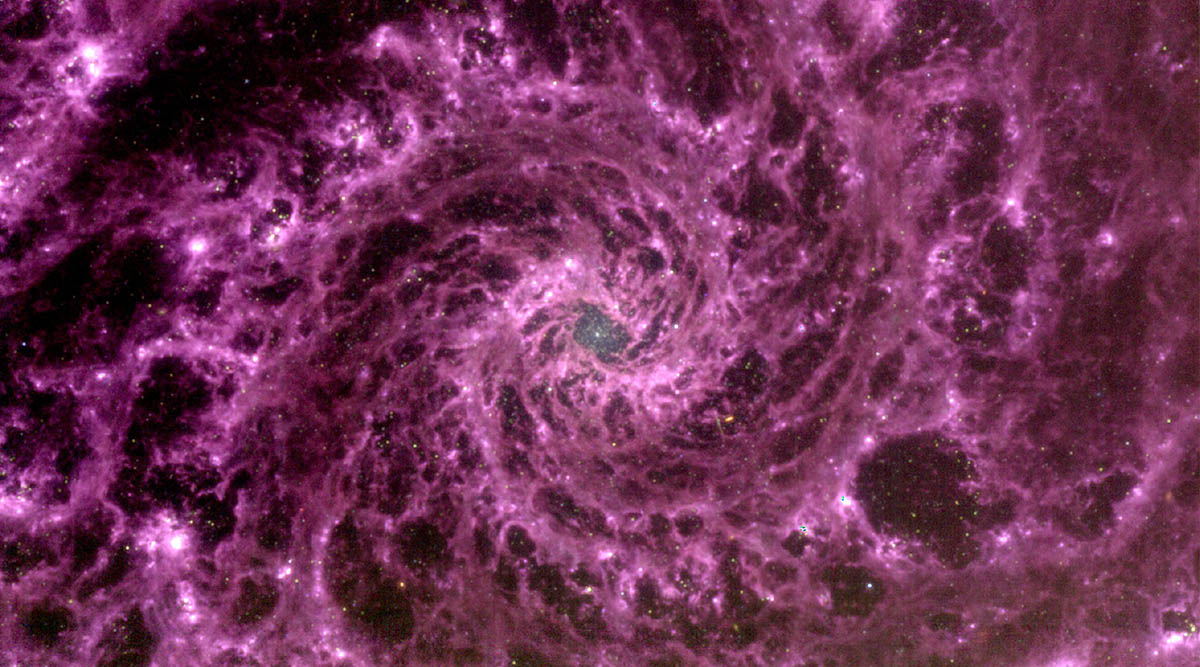A stunning image of the spiral galaxy NGC 628 taken by the James Webb Space Telescope looks like something straight out of a science fiction movie and could help scientists understand how dust behaves in galaxies.
The image was shared on Twitter by Gabriel Brammer of the University of Copenhagen in Denmark. According to the New Scientist, the image is a composite of three sets of data captured by Webb at three different wavelengths. Brammer, who is not part of the Webb team, downloaded the data and translated each set of infrared data to red, green and blue visible spectra of light and combined them to produce this image.
Let’s just see what JWST observed yesterday…
Oh, good god. pic.twitter.com/8UQWi2zPlR— gbrammer (@gbrammer) July 18, 2022
The galaxy has been imaged in visible light in the past by other telescopes, including Hubble and it even looks similar to the Milky Way when viewed from above the galactic plane. Brammer told New Scientist that this image represents how the night sky would look if our eyes could see mid-infrared wavelengths.
For a tiny bit more context, the purple color cast here is actually “real” in the sense that emission from interstellar cigarette smoke (PAH molecules) makes the filters used for the blue and red channels brighter relative to the green
— gbrammer (@gbrammer) July 18, 2022
NGC 628 gets its purple appearance in the image created by Brammer due to the composition of its dust clouds, which are mostly made up of large molecules called polycyclic aromatic hydrocarbons (PAH). Incidentally, PAH is a big component in the smoke from cigarettes.
These molecules only reflect specific wavelengths of light. When Brammer mapped the wavelength data to red, green and blue, there was very little green. The combination of a large amount of red and blue light gave the galaxy the purple colour that can be seen in the image.
!function(f,b,e,v,n,t,s)
{if(f.fbq)return;n=f.fbq=function(){n.callMethod?
n.callMethod.apply(n,arguments):n.queue.push(arguments)};
if(!f._fbq)f._fbq=n;n.push=n;n.loaded=!0;n.version=’2.0′;
n.queue=[];t=b.createElement(e);t.async=!0;
t.src=v;s=b.getElementsByTagName(e)[0];
s.parentNode.insertBefore(t,s)}(window, document,’script’,
‘https://connect.facebook.net/en_US/fbevents.js’);
fbq(‘init’, ‘444470064056909’);
fbq(‘track’, ‘PageView’);








